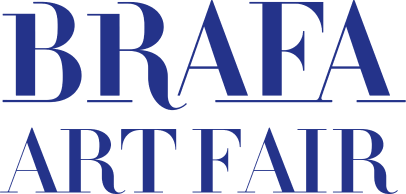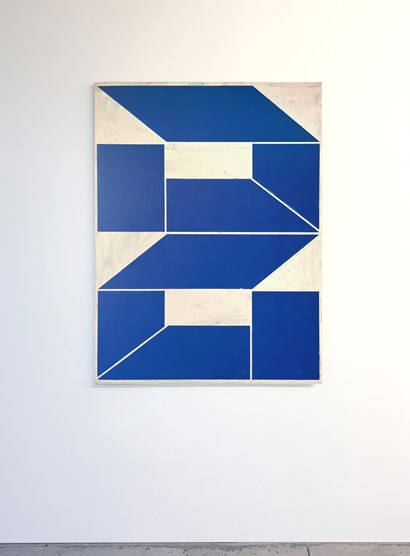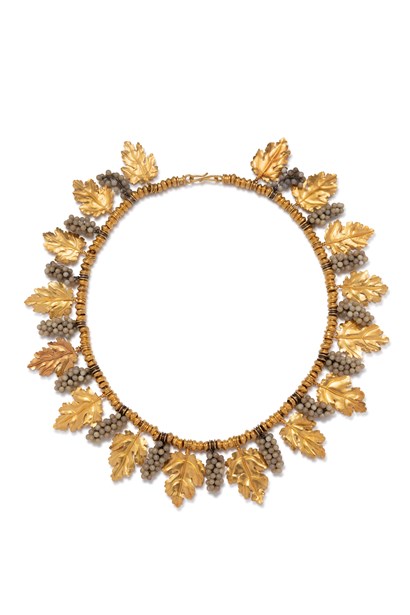This section will be available this Autumn.

Repetto Gallery
valerio adami
Valerio Adami (Bologna, 1935) La firma del muro antico, Odisseo (per E. Pound), 1977 Acrylic on canvas 204 x 152 cm Signed, dated and titled on the reverse: Adami 8.8.77 17.11.77 La firma del muro antico. Odisseo (per E. Pound) Label on the reverse by Galerie Rive Gauche Marcel Strouk, Paris Certificate of authenticity by Archivio Valerio Adami n° 878 Provenance: Galerie Maeght, Paris; private collection, France (acquired from the above) Exhibition: Valerio Adami, 7 October-12 November 1978, Palais des Beaux-Arts, Charleroi; Valerio Adami. Ripensando la realtà, Dep Art Gallery, Milan, 6 March-17 May 2025

Galeria Jordi Pascual
Joan Miró (Barcelona 1893-1983 Palma de Mallorca) Personnage, oiseau III, 1973 Acrylic and wax on paper 90x60 cm Certificate of authenticity from ADOM Provenance: Miró foundation, Barcelona; private collection, Barcelona Literature: J. Dupin y A. Lelong-Mainaud. Joan Miró. Catalogue raisonné. Drawings. vol IV: 1973 - 1976, ed. Daniel Lelong and Successió Miró publishers, 2013. p. 91, fig. 2579

Maurice Verbaet Gallery
paul van hoeydonck
Paul Van Hoeydonck (Antwerp 1925-2025 Wijnegem) Untitled, 1958 Oil on unalit 80 x 80 cm Provenance: Maurice Verbaet collection, Belgium Literature: Jan Ceuleers, Paul Van Hoeydonck, Antwerpen, Pandora Publishers, 2011, p. 160 & p. 287 Exhibition: KMSKA, Antwerp, Belgium, Fallen Astronaut. Hommage aan Paul Van Hoeydonck, 12 September 2025-12 October 2025

Gallery Sofie Van de Velde
wassily kandinsky
Wassily Kandinsky (Moscow 1866-1944 Neuilly-sur-Seine) Kleine Welten, 1922 The Little Worlds consists of twelve prints, including six colour lithographs, four etchings (drypoint), and two woodcuts on Japanese paper, accompanied by a title page and a colophon page Each print is signed and numbered on the colophon page 30/30 (12 prints) 36.4 x 27.8 cm (sheet size) Produced in 1922, this is one of 30 deluxe copies on Japanese paper, published by Propyläen Verlag, Berlin, and printed at the Staatliches Bauhaus in Weimar Literature: Hans Konrad Roethel, 'Kandinsky: Das Graphische Werk', Dumont, Cologne, 1970, ill. pp. 164-175; Helmut Friedel et Annegret Hoberg, Kandinsky. 'Das druckgraphische Werk, Complete Prints, Städtische Galerie im Lenbachhaus und Kunstbau', Munich, 2008-2009, ill. pp. 225-23
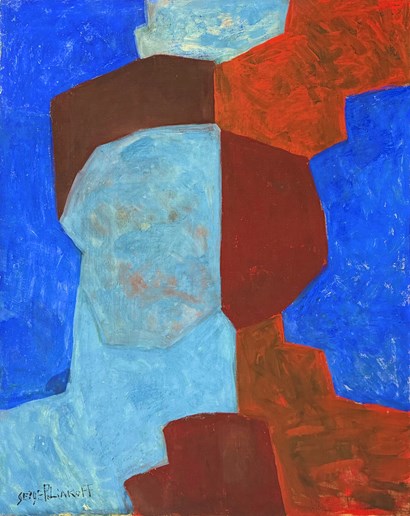
Galeria Jordi Pascual
Serge Poliakoff (Moscow 1900-1969 Paris) Abstract Composition, 1967 Oil on canvas 92 x 73 cm Signed lower left This work includes a photo-certificate of authenticity issued by the archives Serge Poliakoff in 2024 Provenance: Studio Bellini, Milan Literature: Poliakoff, Alexis, 'Serge Poliakoff – Catalogue Raisonné', Volume V, 1966-1969, Munich 2016, p. 236, n° 67-101

Maison D'Art
François Perrier (Pontarlier, circa 1594-1649) The flight into Egypt, the Holy Family prepares to embark, circa 1640 Oil on canvas 100 x 90 cm Literature: M. A. Novelli, in T. Zennaro, ed., La Pittura Eloquente (exh. cat., Monte-Carlo, Maison d’Art), 2010, pp. 33-35, n° 5; A. Brogi, François Perrier e i ‘bolognesi’, Studi di Storia dell’Arte, 29, 2018, pp. 147-166: pp. 151-153 and colour plate XVI Exhibition: Maison d’Art, Monte-Carlo, June 16th-July 16th, 2010, n° 5
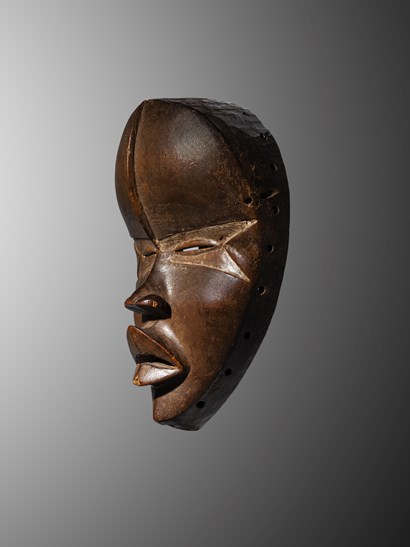
Claes Gallery
Dan 'deangle' Mask Ivory Coast, Dan people Presumed early 20th century Wood and pigment H 25 cm Provenance: Hubert Goldet (1945–2000), Paris, until 1972; Lucien Van de Velde (1933-), Antwerp, from 1972 to 1975; René (1901-1998) & Odette (1925–2012) Delenne, Brussels Literature: Arts d’Afrique Noire 34, 1988, p. 49; Utotombo, Kunst uit Zwart-Afrika in Belgisch privé-bezit, de Heusch, Brussels, 1988, p. 148, fig. 59; A ‘Harley Mask’ at the Cleveland Museum of Art: More on Masks among the Mano and Dan Peoples, Petridis, African Arts, Vol. 45, n° 1, 2012, p. 31, fig. 8; Trésors de Côte d’Ivoire, Neyt, Fonds Mercator, Brussels, 2014, p. 44-45, fig. 18 (indication: H. 26 cm); The Language of Beauty in African Art, Petridis, The Art Institute of Chicago, 2022, p. 207, fig. 164 Exhibitions: Utotombo. Kunst uit Zwart-Afrika in Belgisch privé-bezit, Palais des Beaux Arts, Brussels, 25 March-5 June 1988; The Language of Beauty in African Art, The Art Institute of Chicago, Chicago, 20 January 2022-27 March 2023 Originating from the northwest of Côte d’Ivoire, near the borders of Liberia and Guinea, the Dan are an agricultural people who primarily cultivate rice and cassava. Their way of life, complemented by hunting, fishing, and gathering, is rooted in a patrilineal society without a central authority, structured around clans led by chiefs chosen for their prestige, bravery, or agricultural success. Relations between clans, often marked by rivalries, gave rise to a rigorous social organization: young warriors ensured the group’s defense, while chiefs reinforced their influence through feasts and gifts. Local power rested on a balance between the chief, the council of elders, and the male associations, which upheld discipline, guided the initiation of young men, and preserved community cohesion. The Dan distinguish between two worlds: that of the village - a humanized and social space - and that of the forest, the realm of spirits and natural forces. It is within this duality that their art takes root, renowned for its independence and for the diversity of its styles from one village to another. In their pursuit of formal perfection, Dan artists express through their works an ideal of beauty that is both spiritual and harmonious. A symbol of this aesthetic quest, the Dan 'deangle' mask is characterized by its regular oval shape, polished surface, narrow eyes, short nose, and full, slightly parted lips. The raised scarifications emphasize the geometry and graphic strength of the composition. Of an elegance imbued with softness and femininity, it embodies the Dan ideal of beauty. Used within the Leopard secret society (go), associated with the pacifying spirit zlan, this mask served as an intermediary between young initiates and the village community. First exhibited and published for the general public in 1988, this exceptional work was most recently presented (in 2022) at the Chicago Museum. The mask’s deep gaze, highlighted by a fine band across the eyes, captures the viewer’s attention. Its patina, with warm brown reflections, and its concave form lend it a presence that is both powerful and serene.

Galerie Boulakia
Joan Miró (Barcelona 1893-1983 Palma) Des figures devant la lune, 1942 Pastel, gouache, wash, brush, ink, and pencil on paper 64.5 x 48.5 cm Signed 'Joan Miró' (lower right) Dated 'X Barcelone, 18-12-1942' and titled on reverse Certificate of authenticity from ADOM dated 13 July 2018 Provenance: Pierre Matisse Gallery, New York; Galleria Narciso, Turin Exhibitions: Traveling exhibition Japan, 1984, reproduced cat. n° 17; Ferrara, Palais des Diamants, Joan Miró, 1985, n° 81; Cherasco, Palazzo Salmatoris, Chagall, Miró, Magritte : La Poesia del Sogno, September-December 2005; Paris, Exhibition Jean Louis Prat-Galerie Lelong, Grand Palais, September-October 2018; Mons, Musée des Beaux-Arts de Mons, Belgium, Exposition Joan Miro : L’essence des choses passées et présentes, October 2022-January 2023, repr. in cat. Literature: Jacques Dupin, Ariane Lelong-Mainaud, Joan Miro : catalogue raisonné, Volume II, 1931-1941, Editions Maeght-Lelong, Paris, 2000; Joan Miró exhibition catalogue, L'essence des choses passées et présentes, Editions BAM, Musée des Beaux-Arts de Mons, Belgium, 2022

Thomas Deprez Fine Arts
george minne
George Minne (Ghent 1866-1941 Sint-Martens-Latem) Baigneuse I, 1899 Boxwood (composite) H 40 cm Signed on the base: ‘G. MINNE’ Provenance: private collection by family descent, Belgium Exhibitions: La Libre Esthétique, Brussels, 1902, cat. 139, as: ‘Figure de femme. boxwood.' Related literature: Arthur Roesler, George Minne, in: Deutsche Kunst und Dekoration, 1910, 14th year, IV, 2, ill. article frontispiece, p. 240 (cf. Waerndorfer marble); Léo Van Puyvelde, George Minne, Brussels : Edition 'Cahiers de Belgique', 1930, cat. n° 31, p. 78, ill. pl. 31 (bronze); Robert Hoozee et al., George Minne en de kunst rond 1900, Gent: Museum voor Schone Kunsten, 1982, cf. cat. 95 & 96 (bronze and alabaster). Related exhibitions: Berliner Secession V, Berlin, 1902, cat. 319, as: ‘Badende’ (plaster); Wiener Secession XIV, Vienna, 1902, as: ‘Badendes Mädchen’ (plaster); Tento. Jozef Israëls & George Minne, Rotterdam, 1903, as: ‘Badende vrouw’ (marble); Berliner Secession XI, Berlin, 1906, cat. 332, as: ‘Junge Frau’ (plaster); Mücsarnok, Teli, Nemzetkozi Kiallitas, Budapest, 1908-09, cat. 285 (marble); Esposizione Internazionale d’Arte, Venice, 1909, cat. 3, as: ‘Bagnante’ (marble); Sonderbund westdeutscher K., Dusseldorf, 1910, cat. 237, as: ‘Die Badende’ (marble); Leipziger Jahresaustellung, Leipzig, 1912, cat. 895c, as: ’Baigneuse’ (bronze); Sonderbund internationale Kunstaustellung Köln, 1912, cat. 611, as: ‘Badende’ (marble). Related works: It has been said that George Minne, with the present sculpture, directly influenced Gustav KLIMT (1862-1918) for the painting 'Wasserschlangen I' (1904/07), cf. Hoozee. Its appeal, however, has never faded, as can be seen in several variations on the pose which have been an integral part of the famous Belgian contemporary choreographer Anne Teresa De Keersmaeker’s so-called 'Attitudes'. Note on versions: Van Puyvelde mentions editions in marble, wood and bronze. In addition, several fine plaster casts with family provenances can be identified, amongst others at the MSK Gent and at the Museum Gevaert-Minne. Among the early collectors of bronze versions we find Hélène Kröller-Müller and Karl Ernst Osthaus, partly due to the fact that Minne’s ‘Baigneuse I’ has been a favourite for the inclusion in decorative settings designed by Henry Van de Velde (1863-1959). Versions in marble are held at the Royal Museums of Art & History and at the Belvedere in Vienna. We have been unable to find records of any other versions of Minne’s ‘Baigneuse I’ in wood. Executed in a fine composite of boxwood, it is likely a unique piece in the material and can therefore be identified as entry n° 139 at La Libre Esthétique in 1902; where both a bronze version and a version in boxwood of Minne's 'Baigneuse' were exhibited under the title 'Figure de femme'. Interestingly, the 1902 exhibition of La Libre Esthétique in Brussels also marked the model's public debut, ranking the present version as one of the earliest in existance and one of the first two shown publicly.
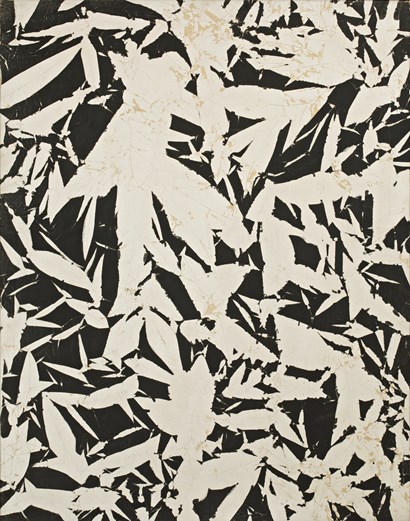
Galerie Berès
simon hantai
Simon Hantaï (Hungary, Bia 1922-2008 Paris, France) Étude en noir et blanc pour Pierre Reverdy, circa 1969 Oil on canvas 96 x 75.5 cm Certificate of authenticity n° 2024-16 from the archives Simon Hantai on October 12th, 2024 Provenance: gifted by the artist to Peter Stuyvesant Foundation in 1969 Exhibition: Tilburg, Kultureel Centrum, Peter Stuyvesant collectie, 1979
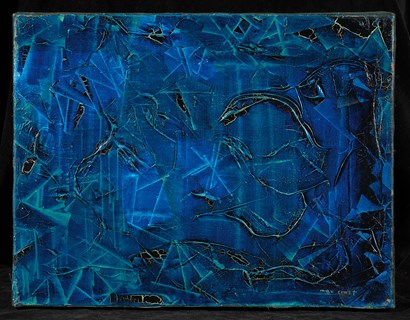
Beck & Eggeling International Fine Art
max ernst
Max Ernst (Brühl 1891-1976 Paris) Un Caprice de Neptune, 1959 Oil on canvas 27 x 35 cm Signed lower right 'max ernst' Provenance: Paolo Marinotti; Lawrence Rubin Greenberg Van Doren Fine Art, New York; private collection, Germany Literature: W. Spies, S. and G. Metgen: Max Ernst. Oeuvre-Katalog, Werke 1954-1963, Cologne, 1998, p. 194, n° 3425 (ill.) Exhibitions: 1961, June-July, Paris, Max Ernst sculptés, Galerie au Pont des Art Weill; 1966, 17 June-2 October, Venice, Max Ernst, Oltre la pittura, Palazzo Grassi, cat. n° 7 (ill.); 1979, Munich, Max Ernst, Retrospektiv, Haus der Kunst, cat. n° 296, ill. III (colour ill. n° 30, ill. 331)
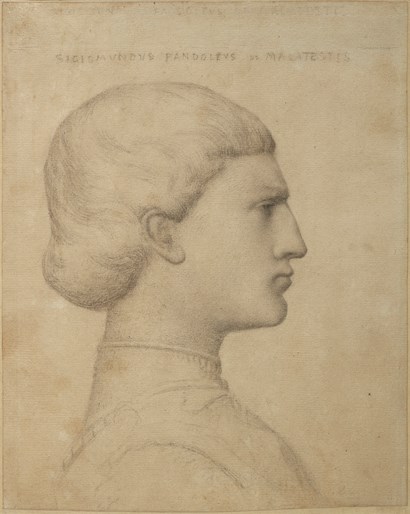
Stéphane Renard Fine Art
jean-auguste-dominique ingres
Jean-Auguste-Dominique Ingres (Montauban 1780-1867 Paris) Sigismondo Pandolfo Malatesta, circa 1814 Graphite and stump on paper 28.2 x 22.7 cm Authenticity confirmed by Mr. Sylvain Bédard after a direct examination Provenance: collection of Jules Cambon (Paris 1845-1935 Vevey) This vigorous graphite and stump drawing testifies to Ingres' interest in medals. Inspired by Pisanello's medal of Sigismund Malatesta, the great condottiere of Rimini, it bears witness to both Ingres' meticulous observation and his capacity for stylization, instilling in this drawing certain characteristic traits that we find in other works by the artist. This drawing may be part of the artist's research during the preparation of Paolo and Francesca, which depicts a scene from the Malatesta court, a painting whose first version was delivered to the Queen of Naples in 1814.

Galerie Perrin
walter sauer
Walter Sauer (Brussels 1889-1927 Algiers) Pensive woman, circa 1925 Mixed media 78.5 x 61.3 cm Signed upper left 'WS Walter Sauer' Provenance: private collection A unique, elegant style characterises the art of Walter Sauer, an artist who, in his short lifetime, lit up the Belgian art scene in the first twenty years of the twentieth century. Sauer's hand has a sensitivity to form that is characteristic of decorators; reality, in his eyes, is stripped of that which is superfluous, showing the noble essence of form. This essentiality, combined with an absolutely personal technique, makes Sauer's works instantly recognisable. The figure of the woman is the leitmotif of the artist, who combines his vision of the model with a series of cultural references ranging from Japanese art to Western tradition.
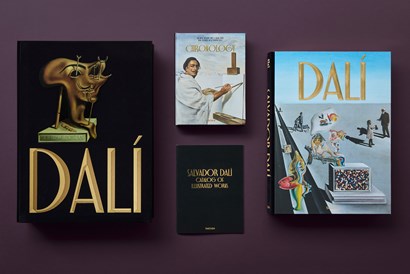
TASCHEN
salvador dalí
Salvador Dalí (Spain, Figueras 1904-1989) Dalí. BABY SUMO This collector’s edition of 10,000 numbered copies presents Salvador Dalí’s work in unprecedented size and detail and is accompanied by a chronology following his path from Catalonia through Paris to Hollywood and back, with photos, sketches, and magazine pages.
__T638925110317245557.tif?width=410&height=2000&qlt=90&scale=both&mode=max&format=jpeg)
Van Pruissen Asian Art
tokuda yasokichi iii
Tokuda Yasokichi III alias Kutani Masahiko (Japan, 1933-2009) Porcelain vase Japan, late 20th century H 29.5 cm Signed ‘Kutani Masahiko’ on the base Literature: Yosai - Tokuda Yasokichi Sakuhinshu (The works of Tokuda Yasokichi), Kodansha 1995, Japan This elegant Kutani porcelain vase by Tokuda Yasokichi III - designated a Living National Treasure in 1997 - exemplifies his groundbreaking approach to traditional ceramic art. The slender, tapering body is enveloped in a rich aubergine glaze, punctuated by a single iridescent blue stripe flowing vertically from the mouth to the base. This striking effect was created using Yasokichi’s innovative saiyū (polychrome overglaze) technique, which brought new luminosity and abstraction to Kutani ware. Born Masahiko, Yasokichi III redefined the possibilities of Kutani ceramics, elevating them into a modern art form. Today, his works are held in leading international museum collections, including the Metropolitan Museum of Art and the British Museum.

Guy Pieters Gallery
yves klein
Yves Klein (Nice 1928-1962 Paris) La Terre Bleue, 1957 IKB Pigment H 41 x Ø 29 cm Provenance: Galerie Bonnier, Geneva; private collection, Sweden Literature: P. Wember, Yves Klein, Cologne, 1969, p. 109, n° RP7 (another example ill.); P. Restany, Yves Klein, New York, 1982, p. 226 (another example ill.); J.P. Ledeur, Yves Klein: Catalogue of Editions and Sculptures Edited, Belgium, 1999, p. 242 (another example ill.); N. Charlet, Yves Klein, Paris, 2000, p. 230 (another example ill.); H. Weitemeier, Yves Klein: International Klein Blue, Cologne, 2001, p. 83 (another example ill.) Exhibitions: Paris, Centre Georges Pompidou Musée National d'Art Moderne, Yves Klein, March-May 1983, p. 109, n° 56 (another example exh.); Nice, Musée d'Art Moderne et d'Art Contemporain and Museo Pecci Prato, Yves Klein: Long Live the Immaterial!, April 2000-January 2001, p. 184 (another example exh. and ill.); Musée des Beaux-Arts d'Angers, Marie Raymond, Yves Klein, November 2004-February 2005, p. 190 (another example exh. and ill.)

Jan Muller Antiques
cornelis kick
Cornelis Kick (Amsterdam, 1634-1681) Flowers in a glass vase Oil on canvas 62 x 49 cm 78 x 69 cm (framed) Authenticity and identification confirmed by Dr. Fred Meijer Provenance: Percey B. Meyer, London, 1953 (as Jacob van Walscapelle) Literature: Jan Kelch and Ingeborg Becker, Holländische Malerei aus Berliner Privatbesitz, Kaiser-Friedrich-Museums-Vereins und der Gemäldegalerie (Berlin, 1984), pp. 170-171 (as Jacob van Walscapelle); Royal Academy of Arts, London, 1952-53: Dutch pictures 1450-1750, catalogue p. 103, n° 563; Gemäldegalerie der Staatlichen Museen Berlin, 1984: Hollandische Malerei aus Berliner Privatsbesitz, pp. 170-171, pl. n° 84
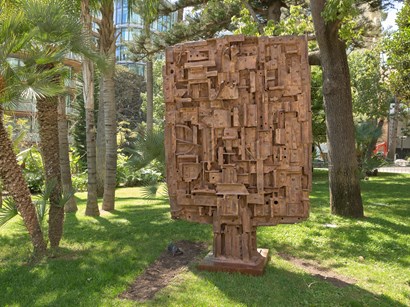
Galerie Patrice Trigano
césar
César, alias César Baldaccini (Marseille 1921-1998 Paris) Hommage à Eiffel, 1989 Welded bronze Bocquel foundry 280 x 200 x 55 cm Signed and numbered Provenance: acquired from the artist in 1990 Literature: P. Restany, César, éd. De la Différence, Paris, 1988, p. 65 and p. 328 (Monumental version of Cartier Foundation, photography in progress); B.-H. Lévy, César, les bronzes, Éditons de la Différence, Galerie Baubourg, Paris, 1991, p. 24; César, Oeuvres de 1947 à 1993, Musée de Marseille, Réunion des Musées Nationaux, Marseille, 1993, p. 159; César, Galerie Enrico Navarra, Paris, 1996, pp. 76-77; César, Museu Brasileiro da Escultura Marilisa Rathsam, São Paulo, 1999, p. 212; Paris, Centre Georges Pompidou, César la rétrospective, December 2017- March 2018, p. 173; Archives Denyse Durand-Ruel, n° 4499 Exhibitions: Marseille, centre de la Vieille Charité, César, oeuvres de 1947 à 1993, July-September 1993, p. 159; Monte-Carlo, César à Monte-Carlo, May-September 1993, (unnumbered); Luxembourg, Dexia Banque Internationale, Hommage à César, October-December 2000, p. 70; Cannes, La Malmaison, César, l’oeuvre de bronze, July-October 2002, p. 86; Travelling exhibition: Cannes, parvis du palais des Festivals, July-September 2002; Geneviève, Galerie Artrium, September-December 2002; Rabat, Musée Mohammed VI d’Art Moderne et Contemporain, César, une histoire méditerranéenne, December 2015-March 2016, reproduced in colour p. 68 and p. 70

Univers du Bronze
jean-baptiste carpeaux
Jean-Baptiste Carpeaux (Valencienne 1827-1875 Courbevoie) Toilette de Vénus, 1855 Circa 1862-1865 Bronze H 66.8 x W 23.5 x D 14.8 cm Chief model in bronze from the Carpeaux Studio, unsigned Provenance: Carpeaux sale (31 May, 1-2 June 1894, lot n° 541); sale 8-9 December 1913 (lot n°1) (...) and assembled as an example; former A. R. collection
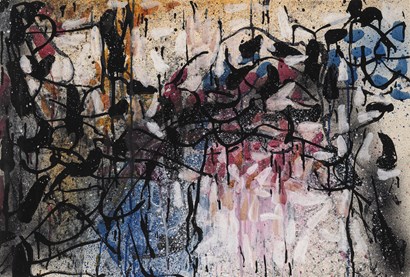
Galerie AB - Agnès Aittouarès
jean-paul riopelle
Jean-Paul Riopelle (Montréal 1923-2002 Saint-Antoine-de-l'Isle-aux-Grues) Composition, 1964 Gouache on paper 46 x 67 cm Signed and dated lower right Provenance: French-Canadian private collection; private collection, Paris Literature: Pierre Schneider, Riopelle. Signes mêlés, Maeght éditeur, Paris, 1972, no. 124, p. 119; Catalogue of the exhibition 'Les Très riches heures de Jean Paul Riopelle', Musée Le Chafaud, Percée, 2000, reproduced on p. 23; Yseult Riopelle, Jean-Paul Riopelle. Catalogue raisonné, volume 3, Hibou Éditeurs, Montreal, 2004, p. 302, reproduced in colour under reference 1964.010P.1964 Exhibitions: Riopelle. Mixed Signs, Maeght Gallery, 1972; The Very Rich Hours of Jean Paul Riopelle, Le Chafaud Museum, Percée, 2000

